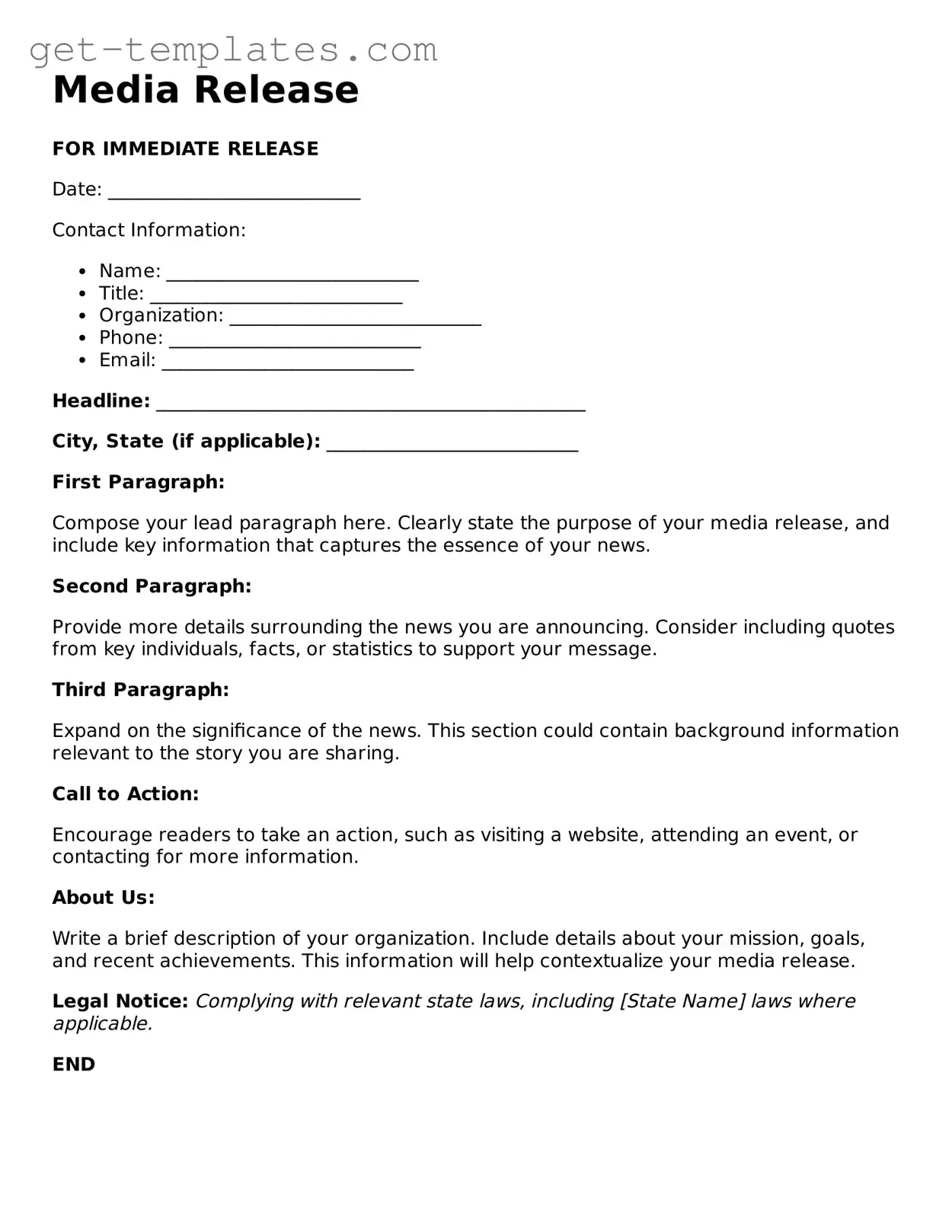Media Release
FOR IMMEDIATE RELEASE
Date: ___________________________
Contact Information:
- Name: ___________________________
- Title: ___________________________
- Organization: ___________________________
- Phone: ___________________________
- Email: ___________________________
Headline: ______________________________________________
City, State (if applicable): ___________________________
First Paragraph:
Compose your lead paragraph here. Clearly state the purpose of your media release, and include key information that captures the essence of your news.
Second Paragraph:
Provide more details surrounding the news you are announcing. Consider including quotes from key individuals, facts, or statistics to support your message.
Third Paragraph:
Expand on the significance of the news. This section could contain background information relevant to the story you are sharing.
Call to Action:
Encourage readers to take an action, such as visiting a website, attending an event, or contacting for more information.
About Us:
Write a brief description of your organization. Include details about your mission, goals, and recent achievements. This information will help contextualize your media release.
Legal Notice: Complying with relevant state laws, including [State Name] laws where applicable.
END
